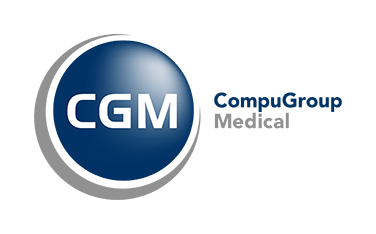KPIs is short for Key Performance Indicators. Financial healthcare KPIs measure the financial health of your practice. They play a crucial role in identifying and reducing inefficiencies.
Common financial KPIs for healthcare organizations include accounts receivable performance, insurance vs. patient balances, days in AR, denial rates, and claim and bill submission rates, to name a few.
By defining, adhering to, and tracking financial KPIs, you can improve the overall financial health of your practice. Let’s review some of the most common financial healthcare KPIs that practices should be tracking and why they are essential to your business.
Net collection rate as part of healthcare KPIs
In simple terms, your net collection rate tells you what you collect for every dollar billed. It provides insight into how much of your revenue is lost due to factors such as uncollectable debt, claim filing delays, as well as other non-contractual adjustments.
To calculate your net collection rate, start with a 12-month timeframe:
- Calculate the number of payments from your payers AND patients during that timeframe. Subtract any credits.
- Calculate your charges for the same timeframe. Subtract contractual adjustments.
- Divide the result from step 1 by the result in step 2.
- Multiply by 100.
Days in accounts receivable
The days in accounts receivable formula helps you determine how long it takes your billing department to clear your accounts receivable. In other words, it’s the number of days that an invoice will remain outstanding before it’s collected. The accounts receivable days ratio is an excellent way to determine how effective your business is at collecting payments, making it a great tool to add to your financial healthcare KPI cache.
Accounts receivable aging
Calculating your percentage of accounts receivable over 90 days is a good indicator of your practice’s ability to collect timely payments. Factors that can influence timely payment include:
- Your payer mix
- Staff efficiency in addressing denied or aged claims
- The ability to collect patient payments
Use your practice management system to analyze your AR buckets.
It is also essential to understand how your AR is performing across your different payer groups. Examine overall AR, but also take time to look at your patient vs. insurance AR to determine where your AR issues are originating.
Patients are now responsible for 30-35 percent of their healthcare expenses. It puts new pressure on your practice to collect patient-owed balances in a quick, efficient, and consistent manner. You want to know if your patient balances over 90 are high or growing.
For your office, denials mean less money in the door, more work for your staff, and less consistency in your monthly AR. A high or rising percentage of AR over 90 is a strong indication your practice has a denial and follow-up problem. You can use this analysis to take a deeper dive into the issues and help identify ways to remedy them in the future.
Denial rates for tracking healthcare KPIs
Your denial rate represents the percentage of claims denied by payers during a given period. This metric is important because it quantifies the effectiveness of your revenue cycle management process.
A high or increasing denial rate will mean less money in the door, more work for your staff, and less consistency in your monthly accounts receivable.
The impact of lag time on healthcare KPIs
Charge entry lag is the time between the date of service and when the claim is created. Claim submission lag is the time between when the claim is created to when the claim is submitted.
Your lag times should not exceed one day. Anything higher impacts your speed to collect revenue.
If your lag times exceed 24 hours:
- Consider investing in staff training and practice optimization services to improve workflow efficiencies.
- Make sure your practice has a documented process to submit charges and claims DAILY!
- Review claim edit reports determining if a lack of clean claims is contributing to delayed claims submission.
Other healthcare Key Performance Indicators to consider
There are many other healthcare KPIs your medical practice can consider tracking, including:
- No-show rates: Estimates suggest that no-shows can cost the healthcare industry more than $150 billion a year. By keeping an eye on your no-show rate, you can limit revenue loss.
- Patient retention: Use this powerful metric to determine if your practice is maintaining or losing patients.
- New vs. established visits: You can use this in conjunction with the patient retention rate to see if you can replace any patients that may leave, allowing you to keep the books balanced.
- Patient acquisition cost: If you are launching a marketing campaign to drive new patient volume, you may consider patient acquisition cost as a KPI. This metric can help you determine the cost-effectiveness of your marketing program.
- Employee satisfaction: It’s also important to monitor the happiness of your employees. Happy employees work harder and stay longer.
Set your practice up for financial success
KPIs should be more than numbers you report to the board. Financial healthcare KPIs help you understand the performance and health of your business so that you can make critical adjustments in your execution to achieve your strategic goals. Knowing and measuring the right KPIs will help you achieve results faster.
To learn more about KPIs and how you can incorporate them into your practice, watch our on-demand webinar below.

